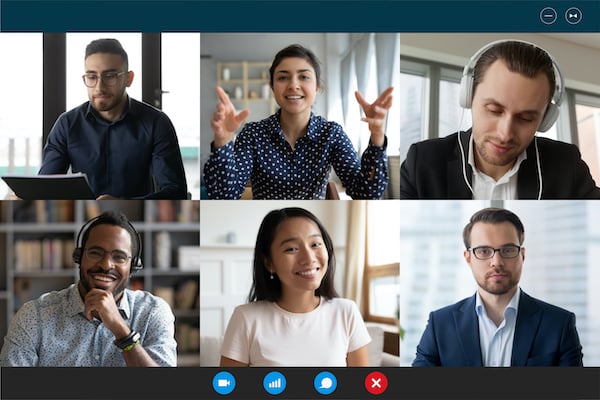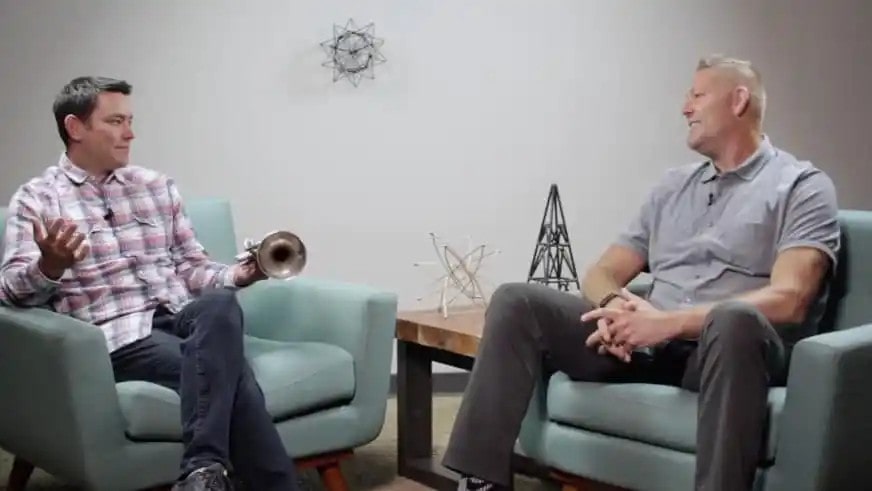
The way some companies approach a presentation or demonstration sounds a bit like a bad date, the line goes, "Enough about me, let's talk about you… what do you think about me?"
- Your Introduction – Something that seems relatively mundane and routine on a sales call, presentation, or demonstration can be a terrific way to stay customer-focused and gain added credibility. This tip is simple - Grab an index card or open a document and write down three things about yourself, but in a customer-focused fashion. Before a virtual presentation, email the information to your sponsor and have them introduce you. This is a fantastic way to build credibility quickly and is a great transition point as you kick off the meeting. It might sound something like this. "Ron has helped companies like yours implement complex solutions for the last 15 years. His understanding of client challenges is unmatched, and finally, he was formally a user of the product, so he has walked in your shoes." When she finishes introducing you, you can start with "Sally, thanks for that introduction! And now…"
- Lose the Company Overview – Is this still necessary?! Today, it is highly likely that if your client is taking time to meet with you, they already have looked at your website reviewed the "about us" page, and looked at your LinkedIn profile to determine your qualifications. Here’s a pro tip if you want to ensure that your client knows who you are. Create a short video of yourself doing a company introduction, then email this to your client in advance of the meeting with a note that reads something like this. "To make our time together as productive as possible, I put together a short video that tells you a little bit about our company and why we believe we would make an excellent partner for your firm."
- End of the Story First – This tip is something that has become even more critical in today's virtual presentation world. But let me take you back to, let's see when was that, oh yeah, January. You were in a conference room with a group of decision-makers, you kicked off your presentation and after about 5 - 10 minutes, the CEO or Executive decision maker leaves due to some text, phone call or emergency. It can be even worse in virtual meetings and presentations. The tip here is to start your presentation by floating your final value proposition, and, if the executive is late, pause your presentation and present the proposition again! If this is a product demonstration, begin with the executive dashboard or similar high level use of the product immediately following your value proposition. You know they are going to check out early, so make sure they get what they are interested in seeing first. Then you can get into the gory details with the rest of the stakeholders in the virtual meeting.
- Context is King – When you are presenting a solution, context is king. Without context, you start to sound "canned", like you have done this 100 times. And you may have, but the key is not to sound like it. A great example is when a tech company demonstrates a software solution, you will hear something like "lead scoring is a key feature of our system, and many of our clients find…" Who cares, what many of your clients find? What about our firm, how will we find it? Taking a little before the meeting to conduct a bit of "e-discovery" (browse their site) and then put your key feature in the context of how this specific organization would take advantage of it. For example, "lead scoring is a key feature of our system and based on your team's current approach to follow up, we believe that you will find…"
- Your Client's Favorite Word – Imagine a situation where you have all the C-Level decision-makers in your "virtual" room. What is your client's favorite word? It's the same as yours, your own name. Using names is key to making a presentation about your client and not about you. The side benefit is it’s also an excellent engagement technique. Pro tip here - Use names in context without necessarily "calling on someone." For example, "I know that Chantel will agree this approach will greatly benefit your sales team." That way, I am not calling out Chantel, but she hears her name and stops doing email. And, never ask “does anyone have any questions? You’ll get crickets! Use people’s names. “Kasandra, I want to check in with you. Do you have any questions, and can you see how your team could use this feature to…?” By starting the “check-in” with Kasandra’s name, you give her the opportunity to task-switch (should she be multi-tasking), and a moment to gather her thoughts. Brilliant right?!
- Technobabble – I happen to have a technical background and am often the Subject Matter Expert in many client engagements. When a customer asks a question or wants an additional explanation, I am always careful not to use "technobabble." Technobabble is what you will typically hear from an SME with all kinds of three letter acronyms and their own company internal speak. That only confuses the listener. Pro tip - the only good Technobabble is your customer’s. Using your customer's internal acronyms and terms is a great way to connect with them and allows you to stay focused on them and their needs, not your own confusing language.
Remember, your Client wants to hear about themselves, how your solution addresses their issues, and in their own context. Enough about you, let’s talk about them!





